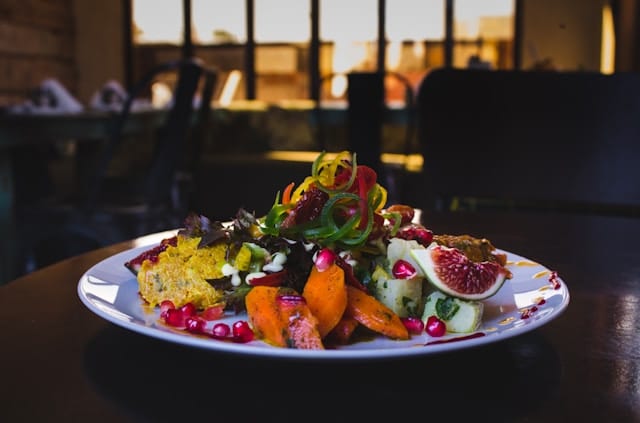How to Smoke a Gourmet Brisket with a Homemade Rub and Slow Cook?

Smoking a brisket is a time-honoured tradition in many parts of the world, especially in regions where BBQ culture is deeply ingrained, such as the Southern United States. This method of cooking beef lets you transform a tough cut of meat into a tender, flavourful dish that melts in your mouth. In this article, we’ll guide you through the process of smoking a brisket in a smoker or cooker, and making a homemade rub to elevate its flavor. We’ll also cover the key points about temperature control, timing, and the role of fat in this cooking process.
1. Understanding your Brisket
Before we delve into the recipe, it’s crucial to understand the cut of beef you’ll be working with. The brisket, located on the lower chest or breast of the beef, is a cut that is rich in fat and connective tissues, making it quite tough. However, when cooked slowly and with care, it will transform into a tender, flavorful piece of meat, ideal for smoking.
In parallel : How to Create a Gourmet Quinoa and Black Bean Burger with Spicy Mayo?
To smoke a brisket, you must first select a high-quality piece. Look for a brisket that has a thick layer of fat on one side, often referred to as the "fat cap". This fat will slowly render down as you cook it, lending moisture and flavor to the meat.
2. Preparing your Brisket with a Homemade Rub
The rub is a vital component of the smoking process. It infuses your brisket with depth and complexity, taking the flavor to another level. You can purchase ready-made rubs, but making your own is a rewarding process that allows for customization according to your taste preferences.
Have you seen this : What’s the Key to Making Authentic German Pretzels with Mustard?
A basic rub recipe includes brown sugar, paprika, salt, pepper, and garlic powder. To these, you can add your choice of spices: cumin, mustard powder, onion powder, thyme, or chili flakes, for instance. Simply mix your chosen ingredients together and set aside until you’re ready to use it.
To apply the rub, pat your brisket dry first, then apply a liberal amount of rub all over the meat, making sure to get into the nooks and crannies. The rub will not only flavor the meat but also help form a delicious crust, or "bark", during the smoking process.
3. Managing Smoker Temperature for Slow Cooking
Controlled temperature is the key to successful slow cooking. For brisket, the ideal smoker temperature is between 225 to 250 degrees Fahrenheit. This low and slow process breaks down the tough connective tissues in the brisket, turning them into gelatin, which gives the meat its melt-in-your-mouth texture.
To maintain the temperature, always monitor your smoker or cooker and adjust the vents as necessary. Too high a temperature may cause the meat to dry out, while too low a temperature will prolong the cooking time and possibly result in a tough brisket.
4. Smoking the Brisket
Once your brisket is seasoned with the rub, and your smoker has reached the desired temperature, it’s time to cook. Place the brisket on the grill, fat side up, and let it smoke. The fat will gradually melt and baste the meat, keeping it juicy and adding flavor.
For an average-sized brisket, smoking time will usually be around 12 to 16 hours. However, don’t rely solely on time. Instead, use a meat thermometer to check the internal temperature of the brisket. Once it hits between 195 to 203 degrees Fahrenheit, it’s done.
During the smoking process, ensure the brisket doesn’t dry out by adding water to the smoker. The steam generated helps maintain a moist environment and contributes to a smoother, more even cooking process.
5. Resting and Slicing the Smoked Brisket
After hours of patient smoking, you might be tempted to dig right into your brisket. However, it’s crucial to let the brisket rest for at least an hour, wrapped in foil, before slicing. This allows the juices to redistribute throughout the meat, resulting in a more flavorful and juicy brisket.
When it comes time to slice your brisket, cut against the grain, not with it. This will result in shorter fibers in each slice, making the meat easier to chew. Your slices should be about a quarter-inch thick for the perfect balance of tenderness and chew.
Remember, smoking a brisket is as much an art as it is a science. It takes practice to perfect the timing, manage the temperature, and get the flavor just right. But when you do, the result is a brisket so tender and flavorful that it’s worth every minute of the time and effort you put into it.
6. Enhancing Flavor by Adding a Bold Barbecue Sauce
After perfecting the art of smoking brisket, you might want to enhance its taste by applying a barbecue sauce. A robust, tangy sauce can complement the subtly smoky and deeply savory flavor of the brisket, creating a harmony of flavors that is pure heaven for barbecue lovers.
When choosing a barbecue sauce, consider the complimentary flavors you want to introduce to your brisket. Whether you prefer a classic smoky, a spicy kick, or a sweet and tangy sauce, it’s all up to your personal preference. Some regions are known for their specific barbecue sauce styles like the sweet and tangy Kansas city style or the vinegar-based North Carolina style sauce.
If you want to make your own barbecue sauce, start with a base of ketchup or tomato sauce. Add brown sugar for sweetness, apple cider vinegar for tang, and Worcestershire sauce for umami depth. You can also add your choice of spices for heat and flavor, such as chili powder, cayenne pepper, or smoked paprika.
Remember to apply the barbecue sauce towards the end of the smoking process. This allows the sauce to adhere and caramelize on the brisket, intensifying its flavor. However, be careful not to burn it. You can reduce the heat or move the brisket off direct heat if needed.
7. Storing and Reheating Leftover Smoked Brisket
If you’re lucky enough to have leftover smoked brisket, it’s crucial to store it properly to maintain its quality.
Allow the brisket to cool completely before storage, and try to leave the fat cap intact to keep the meat moist. Slice your brisket only right before you plan to eat it, as whole brisket retains moisture better than sliced. Wrap the brisket tightly with foil or plastic wrap, or use an airtight container. Properly stored, smoked brisket can last for about three to four days in the refrigerator or up to two months in the freezer.
When reheating, gently warm the brisket in a slow cooker or in the oven at a low temperature. Add a little barbecue sauce or beef broth to prevent it from drying out.
Conclusion
Smoking a brisket is indeed a labor of love, requiring time, patience, and an understanding of meat, fire, and flavor. However, the satisfaction that comes from producing a perfectly smoked brisket with a homemade rub and slow-cooked till it’s tender and juicy is unparalleled.
Remember, the key elements in the process are choosing a quality cut of beef, preparing it with a delicious dry rub, maintaining a consistent smoker temperature, and allowing the brisket to rest after cooking.
Whether you’re a seasoned pitmaster or a beginner at the smoker, this guide provides the necessary steps and tips to create an impressive smoked brisket. Each time you smoke a brisket, you’ll learn more about the subtleties of this process, getting you closer each time to the perfect brisket. So, fire up the smoker, and let’s get cooking!
